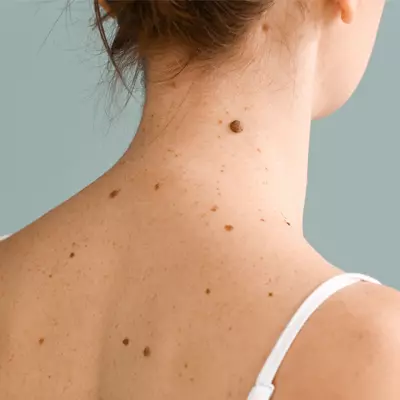Beauty marks? Cancer spots? Whatever you call them. You wonder why they have suddenly started to pop around your body and face. Some of us naturally have moles present on our bodies and faces. Such moles are non-cancerous and not a significant cause of concern. Depending on various factors, you can get rid of those moles using home remedies or with the help of in-office Mole Removal options.
On the other hand, some of us may be more susceptible to getting moles later in our lifetime. Thanks to ultraviolet exposure, genetic predisposition, and the natural aging process. Many dermatologists insist even children apply sunscreen as excessive sun exposure is one of the leading causes of mole formation.
Who is more prone to getting moles?
You have probably heard of NEVUS cells before if you are a biology student. They are present at birth and can slightly be altered during life. They can trigger mole formation. But, principally, moles form due to spending hours in the sun. So, if you have been a fan of tanning or lying on beaches, you are more prone to getting moles.
If there is no ultraviolet exposure, are you safe from moles then?
The short answer is no. Some individuals will form moles with or without sun exposure. However, the probability of developing moles will be significantly less if you are not exposing yourself to the sunlight.
In many cases, moles develop due to hormonal changes, such as during pregnancy. Genetic mutations and immune system weakness are also among the reasons for new mole formation.
Are moles and freckles the same thing?
Well, they are not the same thing. Here is how you can differentiate the two. A mole is dark in color and is a raised bump on the skin, while a freckle is a tiny brown or black spot that is usually flat. Both of them are triggered by excessive sun exposure. While moles lie deep on the epidermis, freckles are on the top of the epidermis and are easier to remove. On the other hand, moles require more aggressive treatment.
What are the Ways to Remove Moles?
A vast majority of people head to home remedies to reduce the appearance of moles. The most common of these remedies include tea tree oil, aloe vera, flaxseed oil, frankincense oil, banana peel, and hydrogen peroxide.
However, it is vital to note that home remedies do not stand in for clinical treatments. These are slower methods that may even cause skin irritation at times. Moreover, you may not know the exact reason for the mole in most cases, meaning that you will be clueless about which remedy best suits you.
For instance, sometimes moles begin to appear due to hormonal imbalance. Since most topical remedies have little to no impact on your hormones, your best bet here is to visit a qualified practitioner. They will prescribe a suitable treatment to bring your hormones in balance.
Even if you have cosmetic moles that can be treated with home remedies, it’s a good idea to speak to a dermatologist instead of throwing your weight behind an unsupervised mole removal regimen. The dermatologist will choose from the most appropriate mole removal treatments to help you achieve a flawless appearance.
Bottomline
Unless it adds to your facial beauty, you will be looking to get rid of that bumpy cluster, aka mole, on your skin surface. Fortunately, you have got plenty of clinical options at your disposal. You will know which one of those would suit you best during a consultation with a skin doctor.
If you want to learn more about the procedure or get an exact quote for yourself, fill out the form below and get a one-on-one, no obligatory appointment with our dermatologists.


